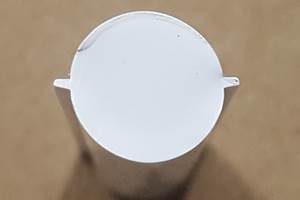Home In on These Six Variables to Monitor Molding
There are hundreds of variables in molding, but focusing on these six will help you make consistent parts.

There are hundreds of variables in the injection molding process. Which ones are the most important? A guy named Dr. E. Deming taught us that in any process, watch only the minimum number of variables. His theories (14 Points of Management) beat Six Sigma, ISO 9000, Factory 4 and more.
Here are the top six variables to watch for in injection molding and the reasons why. The accompanying chart also shows the allowable range for acceptable parts. If you want your processes to make identical parts, you must duplicate the following processing conditions.
Please note: You do not duplicate set points; you duplicate actual measured values. Use your machine’s data table to tabulate and follow these few during production. Keep it simple; you cannot keep track of too many. Yes, a computer can, but you will never make production watch more than roughly six.
- Fill Time: Fill time determines viscosity of the resin. If the machine is set up properly, it can keep the fill time to this tight tolerance. It is tight because fill time establishes the viscosity of the resin at melt temperature by keeping the shear rate the same. Shear rate is the biggest single influence on viscosity. Keep fill time identical and you keep viscosity identical shot to shot.
- Pressure at Transfer: This should vary shot to shot, however, it should NOT trend up or down for more than four shots. This is similar to a why a car engine varies output to keep you at set cruise control speed. Output varies as you go up and down hills, but speed stays the same. The set available pressure must be set significantly higher (but not necessarily at the machine maximum) than the actual peak pressure and transfer pressures. Plus, if the pressure at transfer trends, up or down, it tells you something is changing with the process or plastic. You need to stop saving parts for the client and find out why the process is changing. For example wet resin, new color, contamination or something else?
- Screw Run Time: Screw run time controls melt temperature and consistency. The screw turning develops about 80% of the energy to melt the plastic so it is the main mechanism for melting the plastic. The heater bands only start the melting process. If screw-run/rotation time changes, viscosity may change and you will not have a stable process.
- Cushion: Cushion ensures the part is packed out properly. Please note, it is not well known or understood but parts made where the gate freezes before second stage (pack or hold) ends versus parts made where the gate is not frozen when second stage ends often have drastically different properties.
- Cycle Time: This is straightforward. It is a thermal process and for consistent parts you need a consistent cycle, especially if you run with the gate unsealed.
- Melt Temperature: Melt temperature is critical and should be identical run to run. Unfortunately, just setting temperature on the screen does not assure consistent melt temperature. Why? The screw turning along with back pressure develops ~80% of the energy to melt the plastic. Plus, the thermocouples that provide the temperatures on the screen measure only steel temperatures not the actual melt temperature.
I find it strange that in this day and age there is no practical way to measure actual melt temperature in the barrel. Same for mold temperature. We can control the water temperature, but most temperature controllers vary gallons/minute (gpm) output and often have pressure variations which change the gpm going through the mold. Plus, you have the quality/cleanliness issues of the water, such as cleanliness, scale, rust and more.
I have found that few molders monitor gpm, which is critical to keep the Reynolds number above 5,000 for turbulent flow, which in turn provides uniform and consistent cooling.
About the author: John Bozzelli is the founder of Injection Molding Solutions/Scientific Molding in Midland, Michigan, a provider of training and consulting services to injection molders, including LIMS and other specialties. Contact: john@scientificmolding.com.
Related Content
How to Select the Right Tool Steel for Mold Cavities
With cavity steel or alloy selection there are many variables that can dictate the best option.
Read MoreThe Effects of Stress on Polymers
Previously we have discussed the effects of temperature and time on the long-term behavior of polymers. Now let's take a look at stress.
Read MoreInjection Molding: Focus on these Seven Areas to Set a Preventive Maintenance Schedule
Performing fundamental maintenance inspections frequently assures press longevity and process stability. Here’s a checklist to help you stay on top of seven key systems.
Read MoreWhere and How to Vent Injection Molds: Part 3
Questioning several “rules of thumb” about venting injection molds.
Read MoreRead Next
Beyond Prototypes: 8 Ways the Plastics Industry Is Using 3D Printing
Plastics processors are finding applications for 3D printing around the plant and across the supply chain. Here are 8 examples to look for at NPE2024.
Read MorePeople 4.0 – How to Get Buy-In from Your Staff for Industry 4.0 Systems
Implementing a production monitoring system as the foundation of a ‘smart factory’ is about integrating people with new technology as much as it is about integrating machines and computers. Here are tips from a company that has gone through the process.
Read More
.jpg;width=70;height=70;mode=crop)



















